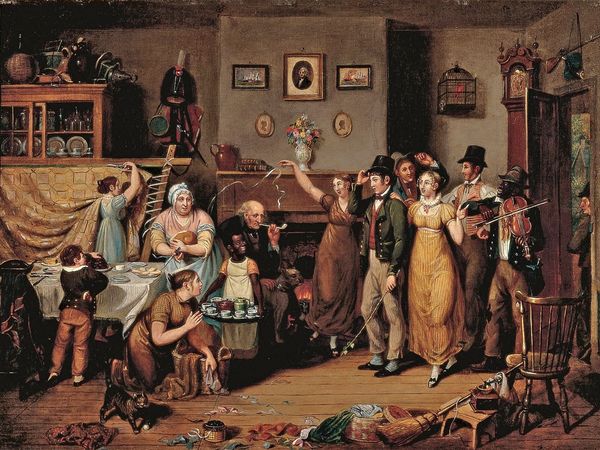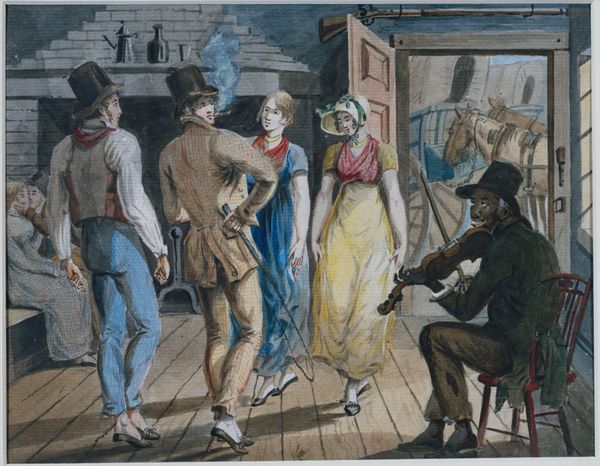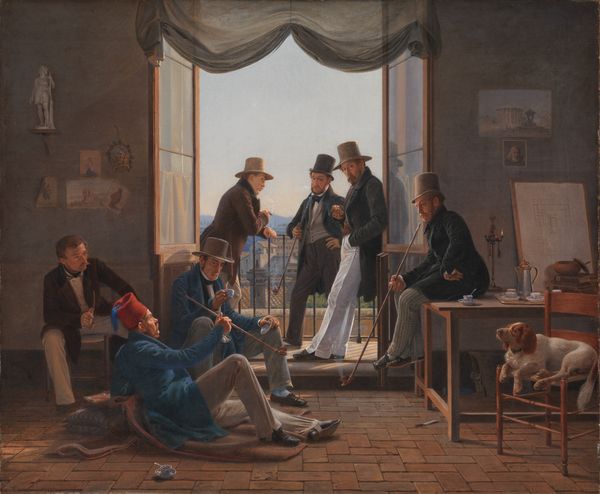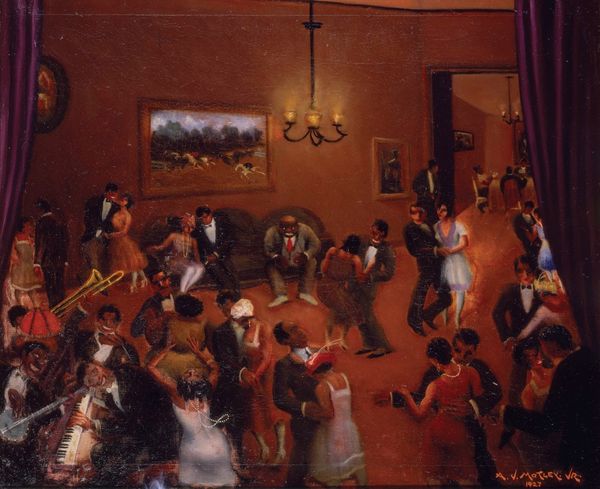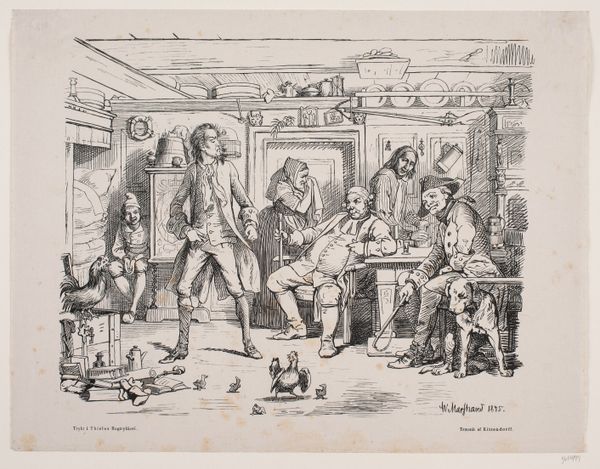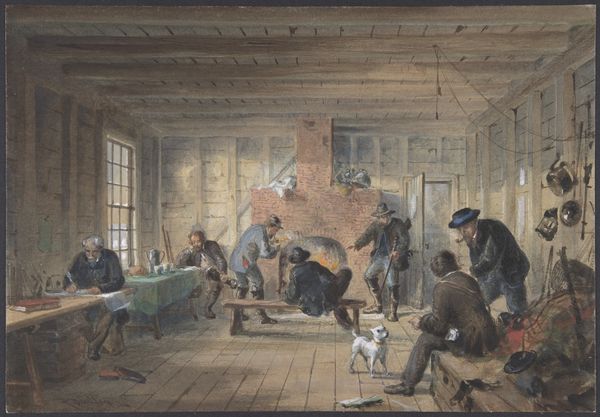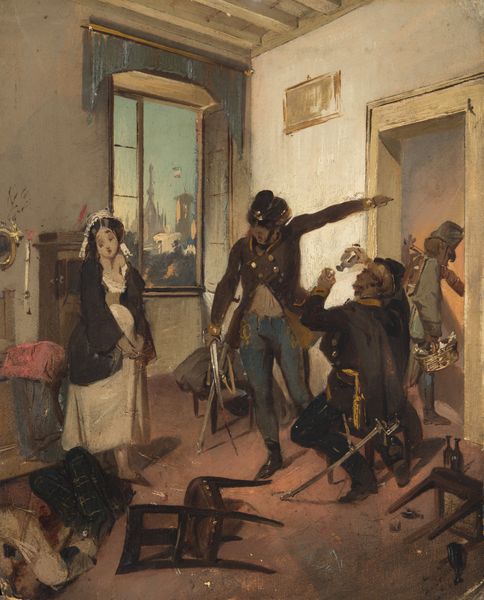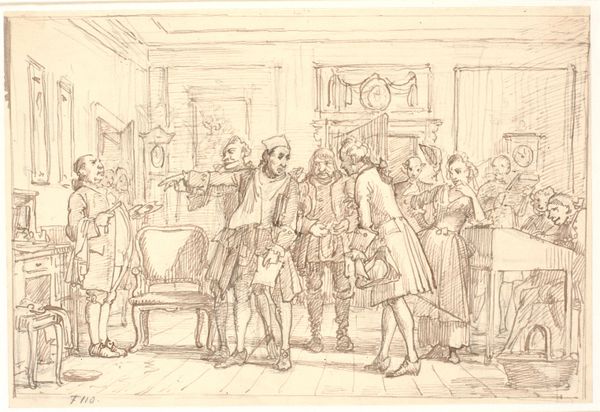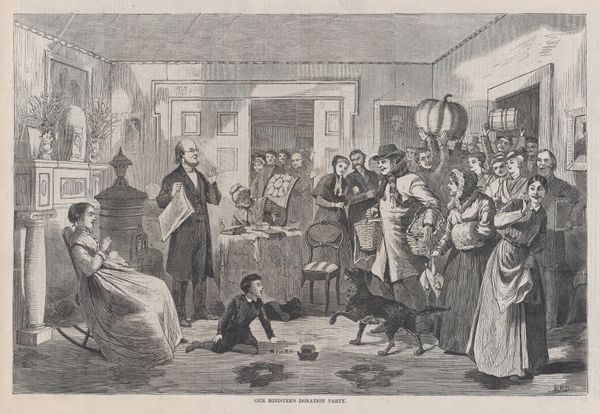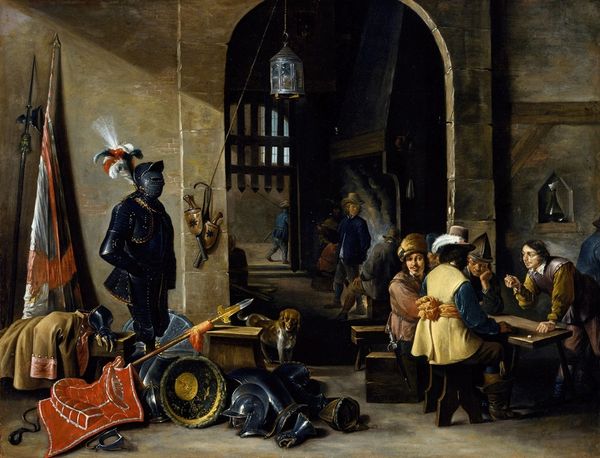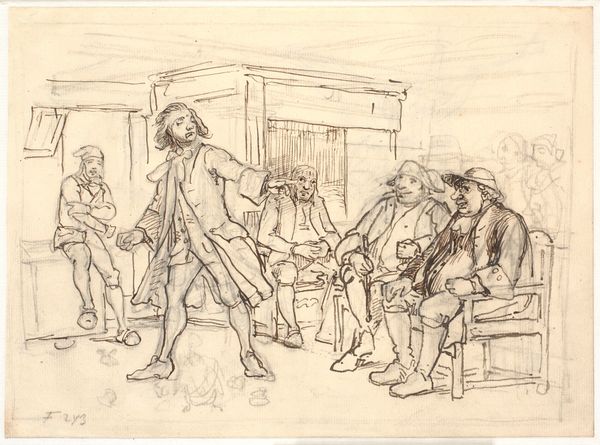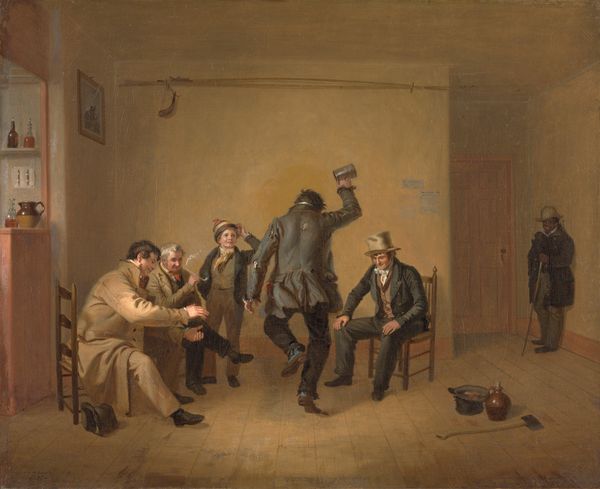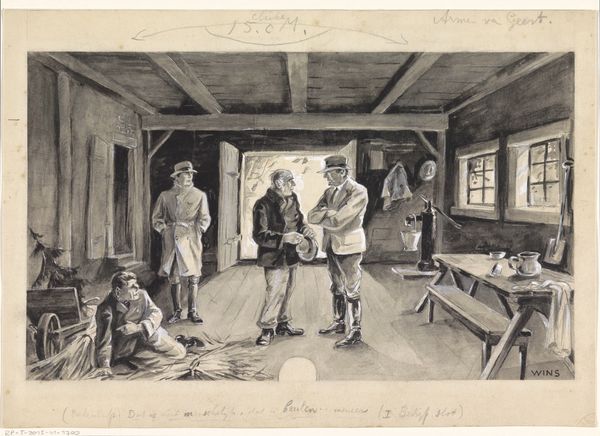
painting, watercolor
#
narrative-art
#
painting
#
watercolor
#
folk-art
#
genre-painting
#
watercolor
Dimensions: overall: 62.2 x 72 cm (24 1/2 x 28 3/8 in.) framed: 73.3 x 84.4 x 4.1 cm (28 7/8 x 33 1/4 x 1 5/8 in.)
Copyright: National Gallery of Art: CC0 1.0
Curator: I’m struck immediately by the painting’s warmth—that honeyed light washing over everything, and the buzz of activity, all that potential for story. Editor: You’ve got a keen eye. We’re looking at "Country Dance," painted in 1883 by Martin Edgar Ferrill. It's watercolor on paper, so the colours have that beautiful transparency, which adds to your point about the warmth. Curator: It feels like a scene from my own family’s history, echoes of my ancestors, maybe just more quaint. The poses seem very stiff, yet I can feel the vitality brewing. Editor: Absolutely, that tension is palpable. You have this gathering, seemingly joyful, but situated within a very specific socio-political context. Look at the placement of the Black musicians, for example. Their integration appears...controlled, set apart. The whole painting offers this curious tableau of hierarchies. Curator: Hmmm. Interesting take. It’s so easy to project our own expectations. My mind went to a simple barn dance—the kind I grew up with—lots of laughter, music swirling, but your analysis gives me a lot to think about, because those musicians are so clearly in the background. Editor: The painting subtly mirrors power structures and divisions, while presenting the allure of communal pleasure, it also highlights inequalities. These genre paintings aren’t simply innocent snapshots; they actively shape the narratives around class, race, and gender within rural settings. Even that rifle hung on the wall has a significance to a moment when Black Americans were still routinely suppressed through organized white paramilitary groups. Curator: True, this isn’t the all-inclusive footloose-and-fancy-free for all image I was idealizing. So much food for thought baked into a lovely visual confection! Editor: Art always prompts us to think about more than just the visible surface, it encourages us to unpack layers and question narratives we might otherwise accept at face value. Even genre scenes like this are products of social history.
Comments
No comments
Be the first to comment and join the conversation on the ultimate creative platform.
